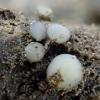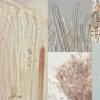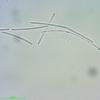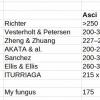
09-01-2026 17:41
Arnold BüschlenHallo, F. dilatata wird von vielen Bryoparasiten

10-01-2026 20:00
Tom SchrierHi all,We found picnidia on Protoparmeliopsis mur

07-01-2026 22:22
 Danny Newman
Danny Newman
Tatraea sp. on indet. hardwood The Swag, Great Sm

10-01-2026 01:18
 Danny Newman
Danny Newman
cf. Neovaginatispora fuckelii on indet. shrub Pre

07-01-2026 10:24
 Danny Newman
Danny Newman
Pezicula sp. on indet. hardwood Appalachian Highl

09-01-2026 10:08
 Blasco Rafael
Blasco Rafael
Hola, en el mismo habitat que la anteriorRetamaDia

08-01-2026 21:22
 Blasco Rafael
Blasco Rafael
Hola, He recogido esta muestra de Orbilia sobre Re

07-01-2026 17:29
 Marc Detollenaere
Marc Detollenaere
Dear Forum,On a barkless Populus I found some smal

10-11-2021 17:33
 Riet van Oosten
Riet van Oosten
Add-on topic http://www.ascofrance.com/forum/7059

07-01-2026 10:05
 Danny Newman
Danny Newman
cf. Chaetospermum on XylariaCosby Campground, Grea
Vibrissea flavovirens?
Stefan Jakobsson,
08-07-2022 02:34
Can it be confirmed that this is V. flavovirens?
Hans-Otto Baral,
08-07-2022 08:39

Re : Vibrissea flavovirens?
I think the colour is not so important. Since I do not have an overniew on available measurements, I cannot easily say if such small measurements ever occurred, but I do not know a further species with these characters.
Stefan Jakobsson,
08-07-2022 11:49
Hans-Otto Baral,
09-07-2022 09:42

Re : Vibrissea flavovirens?
Thanks for this survey. In my key I wrote for flavovirens:
asci *260-343 x 6.5-8.8 µm
spores *125-195 x 1.2-1.8 µm
spore fragments *(27–)30-42(–51) µm
Ascus measurements in your table are probably mostly in dead state, but the differences to living asci are apparently not very high.
In the type of V. minima Velen. on Salix, which I restudied and considered a synonym, I found asci +154 x 4.8-5.3 and spore fragments 27-48 µm. So your spore fragments are a bit shorter than usual.
In a collection from Sheffield (HB 9520) I measured spores *125-134 µm long (like yours), breaking into 4 part spores of *27-38 x 1.3-1.6 µm, 4-celled (ascus length not measured).
In the case there is a continuum of measurements among collections, I suspect that living asci much shorter than 260 µm also occur.
Identities in the literature are perhaps not certain. E.g. Zheng & Zhuang 2017 do not mention the number of spore cells and fragments, but the spore photo suggests flavovirens indeed.



